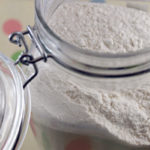Fermentation is a fascinating process with a rich history and a multitude of benefits. But what exactly is it, and why is it so important?
1. Understanding Fermentation
What is Fermentation?
Fermentation, derived from the Latin word “fervere,” means “to boil.” It is the process of cultivating microorganisms to create biomass or stimulate them to produce metabolic products.
Essentially, it accelerates the conversion of sugars into forms like acids, gases, or alcohols.
 General Information about Fermentation
General Information about Fermentation
Fermentation is also broadly applied to the growth of microorganisms in a culture medium, accumulating metabolic products beneficial to humans.
Origin and History of Fermentation
The discovery of fermented products dates back to 7,000 BC, evidenced by traces of wine found in pottery. By 200 BC, a variety of fermented goods were being produced, including pickled vegetables and soy sauce.
In the early 19th century, scientist Theodor Schwann made a groundbreaking discovery about the reproduction of unicellular organisms. This led to the common practice of using sugar to produce alcohol, marking the inception of fermentation.
 Origin and History of Fermentation
Origin and History of Fermentation
Then, in 1853, Louis Pasteur gained recognition as the first person to uncover and comprehend the principles of microbial fermentation and pasteurization.
The diversity of microbial strains and fermented products expanded significantly in the 1960s with the advancement of biotechnology.
Fermentation Process
 Fermentation Process
Fermentation Process
Microbial Culture: This involves isolating and creating strains to generate the necessary energy for fermentation.
Nutrient Medium Preparation: This step relies on understanding the specific nutritional requirements of the microorganisms to create tailored growth media, providing them with essential nutrients.
Sterilization: Sterilization eliminates existing microorganisms in the environment, creating optimal conditions for the desired microbial strains.
Fermentation: This stage involves incubating the microbes in a controlled environment with specific pH, temperature, humidity, time, and oxygen levels. Here, the microbes metabolize the medium, increasing in number and size while producing metabolic products.
Product Recovery: Depending on the type of fermentation, the desired products can be metabolic by-products or the biomass of the microorganisms themselves.
2. Why Ferment Food?
Fermenting food offers several advantages. Anaerobic bacteria, which thrive in oxygen-deprived environments, inhibit the growth of food-spoiling microorganisms, thereby preserving and enhancing the flavor of food. Fermented foods also introduce beneficial microorganisms into the digestive tract.
 Reasons for Fermenting Food
Reasons for Fermenting Food
Common fermented products include wine, cheese, hydrogen gas, and wastewater treatment.
3. Fermented Foods for a Healthy Diet
 Fermented Foods for a Healthy Diet
Fermented Foods for a Healthy Diet
Fermented foods are nutritional powerhouses that can easily be incorporated into your diet. Here are some fermented foods known for their health benefits:
- Apple Cider Vinegar
- Pickles
- Sauerkraut
- Yogurt
- Kefir
- Kimchi
- Tempeh
4. Common Fermentation Methods
Ethanol Fermentation
 Ethanol Fermentation
Ethanol Fermentation
Ethanol fermentation is an anaerobic process that converts sugars into ethanol. This transformation occurs in the cytoplasm of yeast cells, producing ethanol and carbon dioxide.
While ethanol fermentation is commonly used in wine and beer production, it can generate high levels of pectin, which may be harmful to health.
Propionic Fermentation
Propionic fermentation involves the conversion of sugars and lactate salts into propionic acid by microorganisms. This process also yields by-products like acetic acid, carbon dioxide, and water.
Propionic acid, formed during this fermentation, is a liquid used as a preservative and flavoring agent, known for its pungent odor. Propionic fermentation finds application in the production of propionic acid and Swiss cheese.
Lactic Fermentation
Lactic fermentation transforms sugars into lactic acid through the activity of microorganisms, predominantly lactic acid bacteria. This process includes specialized mechanisms to transport lactose into the bacterial cells for subsequent breakdown and conversion into acids.
 Lactic Fermentation in Cheese Making
Lactic Fermentation in Cheese Making
Lactic fermentation is commonly used in the production of yogurt, cheese, and pickled vegetables.
It is categorized into two main types: homolactic and heterolactic fermentation, both of which occur under anaerobic conditions.
5. Applications of Fermentation
 Application of Fermentation in Yogurt Production
Application of Fermentation in Yogurt Production
Fermentation offers a multitude of benefits and finds applications in various aspects of our lives:
Food Production and Processing: Fermentation is a familiar and widespread method used in producing yogurt, cheese, wine, and more.
It plays a crucial role in creating nutritious foods, enhancing their appearance, and prolonging their shelf life. Additionally, it generates probiotics that combat gut bacteria and boost immunity.
Laboratory Use: Fermentation is employed to assess the quality of microorganisms involved in the process. This includes steps such as microbial culture, nutrient medium preparation, sterilization, fermentation, and product recovery.
Environmental Protection:
 Application of Fermentation in Wastewater Treatment
Application of Fermentation in Wastewater Treatment
The use of fermentation in wastewater treatment is a significant advantage for environmental protection and preservation.
6. Advantages and Disadvantages of Fermentation
Here are some key benefits of fermented products:
 Benefits of Fermented Products
Benefits of Fermented Products
Digestive Support: Probiotics and beneficial gut bacteria aid in food breakdown and bacterial inhibition, promoting smoother digestion.
Immunity Boost: Fermented foods containing lactic acid bacteria help eliminate harmful bacteria and strengthen the body’s immune system. They also protect against common inflammatory diseases.
Essential Enzyme Production: Fermented foods are rich in enzymes that enhance food consumption efficiency and stimulate the body’s production of B vitamins.
However, fermented products also have some drawbacks:
 High Salt Content in Pickles
High Salt Content in Pickles
Cancer Risk: Nitrosamines, formed during the fermentation of foods like cured meat, can promote cancer development. Additionally, high sodium levels in fermented foods may adversely affect individuals with heart disease, hypertension, and other conditions.
Excessive Salt Intake: Fermented pickled products often contain high salt levels, and excessive consumption can lead to health issues like high blood pressure, stroke, and heart disease.
We hope you found this information enlightening. If you have further questions, feel free to explore and learn more!






































